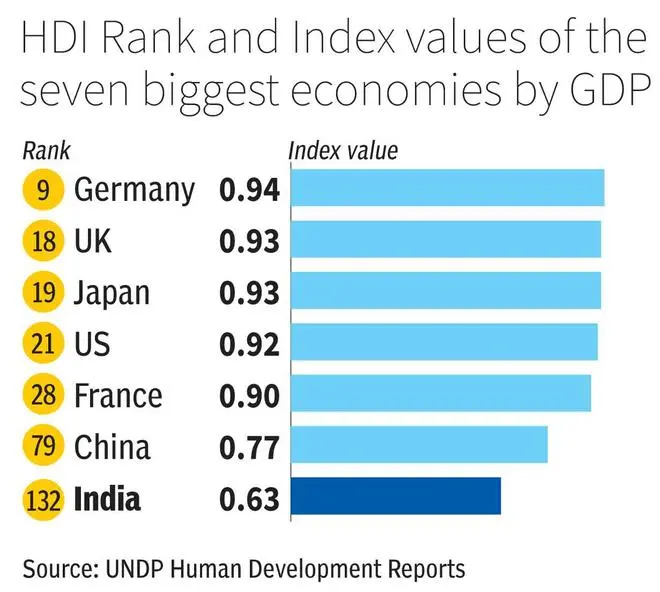It delves into metrics such as HDI rank, GNI per capita, life expectancy, literacy rate, and youth unemployment, shedding light on areas where India must improve to achieve this status.
Prime Minister Narendra Modi envisions India becoming a developed country by 2047. Every Indian must aspire to this, and hopefully, we will get there by the intended time. But before that, do you know what factors that result in a country getting the ‘developed economy’ status? Here are some pointers.
The term “developed country” doesn’t have a single accepted definition, with different institutions having different parameters classifying a developed country. For example, the UNDP (United Nations Development Program) has a threshold of the 75th percentile in HDI (Human Development Index) distribution to be classified as a developed country, whereas the World Bank classifies countries whose GNI (Gross National Income) per capita is above $13,845 as “high-income countries”. The IMF (International Monetary Fund) uses per capita income level although it is not considered a strict criterion as other factors are also considered. While the definition may vary, all estimates agree that India falls within the threshold of developing countries and can be considered a lower middle-income economy. As per the latest available data, India’s HDI rank stood at 132, which places it at around the 33rd percentile, and India’s GNI per capita stood at $2,380 in the year 2022, according to the World Bank.


Considering any of the above metrics, we have a long distance to cover to gain the ‘developed economy’ tag. Achieving this requires a focus on improving per capita GNI and HDI rank. One major reason for India’s low ranking in the HDI index is its relatively low life expectancy which stood at 67.3 years according to the latest available data compared to a worldwide average of 71.3 years. A comparison can be made to neighbouring China, whose life expectancy, is around 78 years, which could mostly be attributed to improvements in public health services, especially in infant and maternity health. China’s literacy rate also stands at 99.8% compared to India’s 76.32%, which explains China’s constant improvement in the HDI Index over the past 10 years compared to India’s rank plateauing in the 130s.
Government spending on education and health in India stands at 6.6% and 2.1% compared to 10.9% and 7.1% in China. Studies have shown that government spending on health, especially education, has a direct positive correlation with the HDI index. Another major factor India needs to improve on is its youth unemployment rate. The recent ILO (International Labour Organisation) report contained the alarming statistic that India’s youth accounted for 83% of the unemployed workforce in India. Job creation for educated youth is a key factor in the development of a country, and government policies that generate employment opportunities should be of paramount importance. One could say, at an absolute level, that India is a wealthy country as it now has the fifth largest GDP in the world. However, it has a very low GDP per capita. India has to navigate the unique challenge of having a 1.4 billion strong population on its path to becoming a developed nation.
Obstacles to overcome
India has a variety of obstacles, ranging from the majority of its population still living on low income to weak education and health infrastructure, that need to be overcome to attain the holy grail of becoming a “developed country”. While GNI will grow as long as GDP grows faster than population, ensuring a more equitable growth will be crucial to becoming a developed country. With a well-thought-out plan and targeted government spending, India can attain the status of a “developed country” by 2047.
The author is an intern with bl.portfolio





Comments
Comments have to be in English, and in full sentences. They cannot be abusive or personal. Please abide by our community guidelines for posting your comments.
We have migrated to a new commenting platform. If you are already a registered user of TheHindu Businessline and logged in, you may continue to engage with our articles. If you do not have an account please register and login to post comments. Users can access their older comments by logging into their accounts on Vuukle.